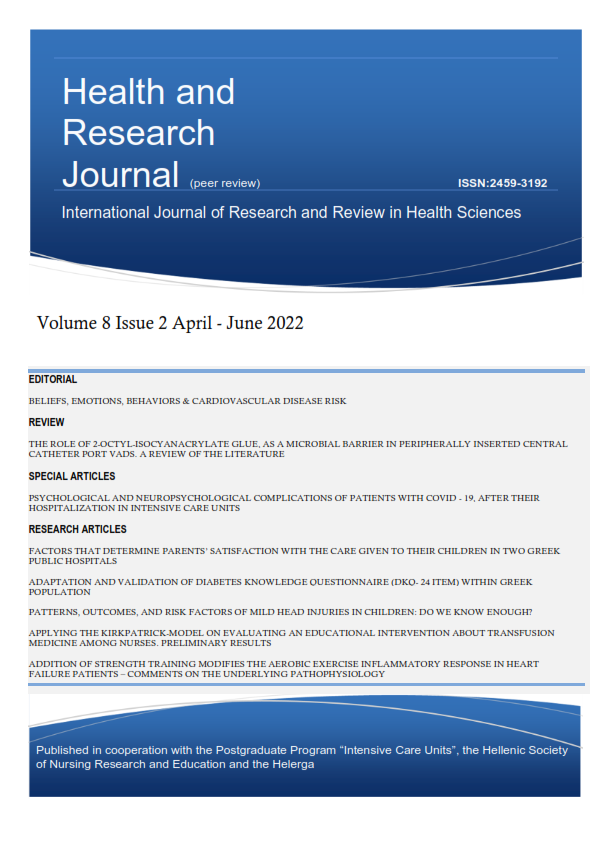Patterns, outcomes, and risk factors of mild head injuries in children: do we know enough?

Abstract
Background: Mild head injuries in children are associated with morbidity and family distress. Though they are common causes of emergency department visits, they have been studied less than other more severe types of head trauma. This study aims to contribute to the reduction of this gap.
Method and Materials: The medical records of 381 children with mild head injuries were reviewed and analyzed. Identification of any associated risk factors has been attempted with regression analysis.
Results: The age group of 6-8 years was the most affected (44.6%). There was male predominance. Incidence presented seasonal variation. Concussion diagnosis was set in one tenth of patients. Half of children were under adult supervision during the traumatic incident. Cranial radiography was routinely performed in almost all patients, and computed tomography in 1.8%. Neurosurgical consultation was requested in 8.1%. Pedestrians, bicycle-riders, and car-passengers were at most risk of suffering mild head injury. Occurrence at street and playgrounds were risk factors for coexisting abdominal injuries. Absence of adult supervision was a risk factor for bicycle-riders, and occurrence at school for neurosurgical consultation.
Conclusions: Mild head injuries occur more often at the streets of urban areas. Clinical observation for 24 hours is considered satisfactory for a safe outcome. Identification of risk factors of mild head injuries may improve both prevention and outcome. Improvement of training of physicians in pediatric trauma is also required. Quality of adult supervision is important to improve prevention.
Article Details
- How to Cite
-
Sinopidis, X., Kallianezos, P., Petropoulos, C., Gkentzi, D., Fouzas, S., Karatza, A., Panagiotopoulos, V., Spyridakis, I., Roupakias, S., Sakellaris, G., & Jelastopulu, E. (2022). Patterns, outcomes, and risk factors of mild head injuries in children: do we know enough?. Health & Research Journal, 8(2), 119–132. https://doi.org/10.12681/healthresj.28882
- Section
- Original Articles
Copyright notice:
The journal "Health and Research Journal" reserves the rights for copyright of the content of the website and also the copyright of the articles published.
By virtue of their appearance in this journal, the articles are free to be used for non-commercial purposes. However, the articles cannot and must not be used in anyway, published elsewhere or modified without any reference to the author and the first publication of the article.


